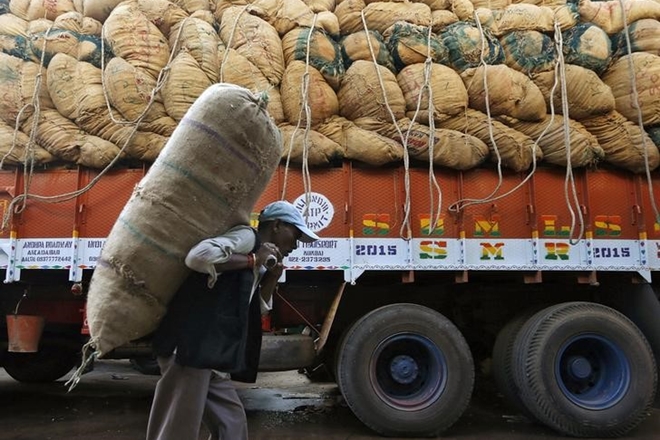The State of Uttar Pradesh has undertaken a radical set of politically controversial economic reform measures. 134 years of unceasing worker, reform movements became meaningless due to an ordinance dated May 6. The government gave a loud and clear message that it is not the wisdom but the authority that makes a law. Preconceived notions have many times driven India to the spider’s web trap but we never seem to learn.
Looks like an exaggerated statement? Let us find out.
The Uttar Pradesh government introduced the “Uttar Pradesh Temporary Exemption from Certain Labour Laws Ordinance, 2020” which suspends 35 out of 38 labor laws for the next three years. Crucial Central laws such as the Minimum Wages Act, the Payment of Wages Act, and the Payment of Bonus Act find their place in the list as well. The Acts that will be still in force are- Bonded Labour System (Abolition Act) 1976, Employee Compensation Act 1923, Building and Other Construction Workers Act 1996, and Section 5 of Payment of Wages Act 1936.
LEGAL VALIDITY-
INCONSISTENCY BETWEEN THE STATE AND THE CENTRE-
Labour comes under the concurrent list, both the Centre and State can make laws under this subject. However, an imperative question arises down the line. Can a State government completely suspend the Central laws?
To fulfill the constitutional obligations, the Ordinance needs to be sent to the Central government under Article 213 for its approval on the matter.
Suspending Central laws-
Article 213 (1) of the Constitution has the following provisions:
“(a) a Bill containing the same provisions would under this Constitution have required the previous sanction of the President for the introduction thereof into the Legislature; or
(b) He would have deemed it necessary to reserve a Bill containing the same provisions for the consideration of the President; or
(c) An Act of the Legislature of the State containing the same provisions would under this Constitution have been invalid unless having been reserved for the consideration of the President; it had received the assent of the President.”
According to Article 254(2), if any Bill concerning a subject present in the Concurrent list which may be contrary to a Union law, needs the approval of the President. The Bill needs to be cleared by the Centre and then needs to be sent to the President for his assent. Ordinances were also added under the ambit of Article 213(1). Hence, the State cannot directly move to make exemptions against a Union Law.
CLAIM OF REPUGNANCY-
The term ‘Repugnancy’ means an inconsistency between the State-made law and Union-made law. To explain the current conflict, we need to look into the para 8 of M. Karunanidhi v. Union of India [(1979) 3 SCC 431]judgment, where the Court held that- “Where however a law passed by the State comes into collision with a law passed by Parliament on an Entry in the Concurrent List, the State Act shall prevail to the extent of the repugnancy and the provisions of the Central Act would become void provided the State Act has been passed in accordance with clause (2) of Article 254.”
The fact that the Uttar Pradesh government has sent the Ordinance to the Centre for approval means that the State is claiming repugnancy and asking to suspend entire laws and not just the Sections that were delegated to it.
IMPACT OF THE ORDINANCE-
Well, the ordinance is threatening the basic human values of the workers. It erases the line of distinction between ‘mere animal existence’ and a ‘sustainable life’ of an individual. Rights such as lighting, toilet facilities, first aid, protection equipment in hazardous industries, water, intervals of rest, etc. seem to go down the drain, where the authorities never look, to avoid egalitarianism. Factories Act that has set an 8-hour daily shift limitation will not be applicable. Industrial Disputes Act, 1947 that covers 12 sectors and contains provisions where lay-offs require government approval is also included in the list. It is of a core concern that the changes bought by the ordinance would dilute protections. India will take a U-turn and move towards the North American ‘Hire and Fire’ model.
Mr. K.R. Shyam Sunder of the Xavier Labour Relations Institute expressed his concern- “Giving flexibility to employers is meaningless unless supply-side measures such as wage subsidies, cheaper capital and better access to markets are provided. This makes the livelihood of the workers vulnerable.”[i] According to sources, 4,61,589 hectares have been identified for the prospective investment.[ii] Luring the investors by developing a land pool, double the size of Luxembourg seems like a good idea. Saudi Aramco that was frustrated by delays in the acquisitions last time has shown some interest in this new venture. The government has identified 10 major sectors- electrical, pharmaceutical, medicinal devices, electricity, heavy engineering, solar equipment, food processing, oil, chemicals, and textiles.
The roadmap of the government is commendable but the people who will contribute most to the success of this roadmap get nothing. On top of this, if the laborers threaten to strike, employers could raise an Industrial dispute against them. However, let us understand this step through an economic lens before we make any more assumptions and adopt the government’s strategy.
ECONOMIC ANALYSIS-
THE RAJASTHAN MODEL-
It is imperative that we start by discussing what I call the ‘Rajasthan Model’. Rajasthan’s productivity spiked from 3.13% to 12% after several reforms were made to its labor laws.[iii] The government has interpreted the ‘Economic Survey 2019-20’ to suit its needs from time to time. The survey records high entrepreneurial activity in the manufacturing sector in Gujarat, Punjab, and Rajasthan. States like West Bengal, Assam, Jharkhand, Kerala, and Bihar recorded low output due to shoddy enforcement mechanisms and inflexible labor laws. However, this is inaccurate, misleading, and self-contradictory. Other critical factors such as agglomeration output, labor skills, ease of doing business with developing enterprises were voluntarily not looked into. West Bengal with one of the most inflexible labor laws recorded the highest GDP growth in the FY 2018-19 at 12.58%.[iv] Guess the government does not have an explanation for this.
INFLEXIBLE AND FLEXIBLE LABOUR LAWS-
V.V. Giri National Labour Institute in 2017 conducted a study “Amendment in Labour Laws and Other Labour Reform Initiatives Undertaken by State Governments of Rajasthan, Andhra Pradesh, Haryana, and Uttar Pradesh: An Analytical Impact Assessment”[v] where it found out that even after two years of severe reform in labor laws, neither State has succeeded in attracting investment nor in boosting industrialization or job creation. This was also substantiated by a CUTS International where the reason for better productivity in a manufacturing unit was found out to be raw material and logistical costs. Labour was held to be a secondary factor. Flexible labor laws were not counted as a contributor to the increase in productivity and growth.
THE SURGEON SCALPEL’S DEFENCE-
The government wanted to remove the structural bottlenecks through this ordinance so that the organized workforce could flourish. It would not apply to the informal sector, which constitutes nearly 90% of our workforce. It is high time that the government sees reform as the solution and not wholesale abandonment. The step-motherly treatment of the informal sector must be stopped. The empowerment of the informal economy is more important than the dissemination of the formal economy. The Centre for Business Research in Cambridge and the Global Development Institute at Manchester University studied 117 countries for a period of 44 years and found that improvement in labor rights has increased productivity, employment, bought greater equality in society, and is another source of economic growth. India’s encounters with economic reforms remain steeped in disbelief. Labour laws are not the villain hampering growth as they are made out to be. However, whatever the laws are, they must be administered much more efficiently, as must other laws, to make it easy for small enterprises to do business. Preconceived notions anchored in the status quo of the past must be eliminated.
When Lakshmana was badly wounded by the powerful weapon of Indrajit, physician Shusena said that only ‘Sanjeevani’ could revive him. Lord Hanumana in search of the herb could not identify it and bought the whole mountain to Lanka. Lakshmana lived. However, the people who lived near that mountain in Uttarakhand have not forgiven Hanumana for his inordinate reaction. The only thing that we learn from history is that we never learn from history.
By-

Yug Sinha
REFERENCES-
[i] Shreehari Paliath, ‘Why trade unions are pushing back against India’s proposed Industrial Relations Code’, Scroll.in, retrieved from https://scroll.in/article/949030/why-trade-unions-are-pushing-back-against-indias-proposed-industrial-relations-code.
[ii] Shruti Srivastava, ‘India offers land twice Luxembourg’s size to firms leaving China’, Bloomberg, May 05 2020, retrieved from https://economictimes.indiatimes.com/news/economy/policy/india-offers-land-twice-luxembourgs-size-to-firms-leaving-china/articleshow/75534412.cms?from=mdr.
[iii] Rituparna Bhuyan, ‘Labour Law puzzle: Yogi, Chouhan govts can take a leaf out of Rajasthan playbook’, CNBCTV 18, retrieved from https://www.cnbctv18.com/economy/labour-law-puzzle-yogi-chouhan-govts-can-take-a-leaf-out-of-rajasthan-playbook-5883921.htm.
[iv] PTI, ‘West Bengal on top in terms of GDP growth rate: Amit Mitra’, Economic Times, August 10 2019, retrieved from https://economictimes.indiatimes.com/news/politics-and-nation/west-bengal-heads-gdp-growth-rate-amit-mitra/articleshow/70621485.cms.
[v] Dr Sanjay Upadhyaya & Pankaj Kumar, ‘Amendment in Labour Laws and Other Labour Reform Initiatives Undertaken by State Governments of Rajasthan, Andhra Pradesh, Haryana, and Uttar Pradesh: An Analytical Impact Assessment’, V.V. Giri National Labour Institute, retrieved from https://vvgnli.gov.in/sites/default/files/122-2017%20-%20Sanjay%20Upadhyaya.pdf.
Previous post: https://desikanoon.in/interview-of-mr-mohit-mathur-senior-advocate-and-president-of-the-delhi-high-court-bar-association/


